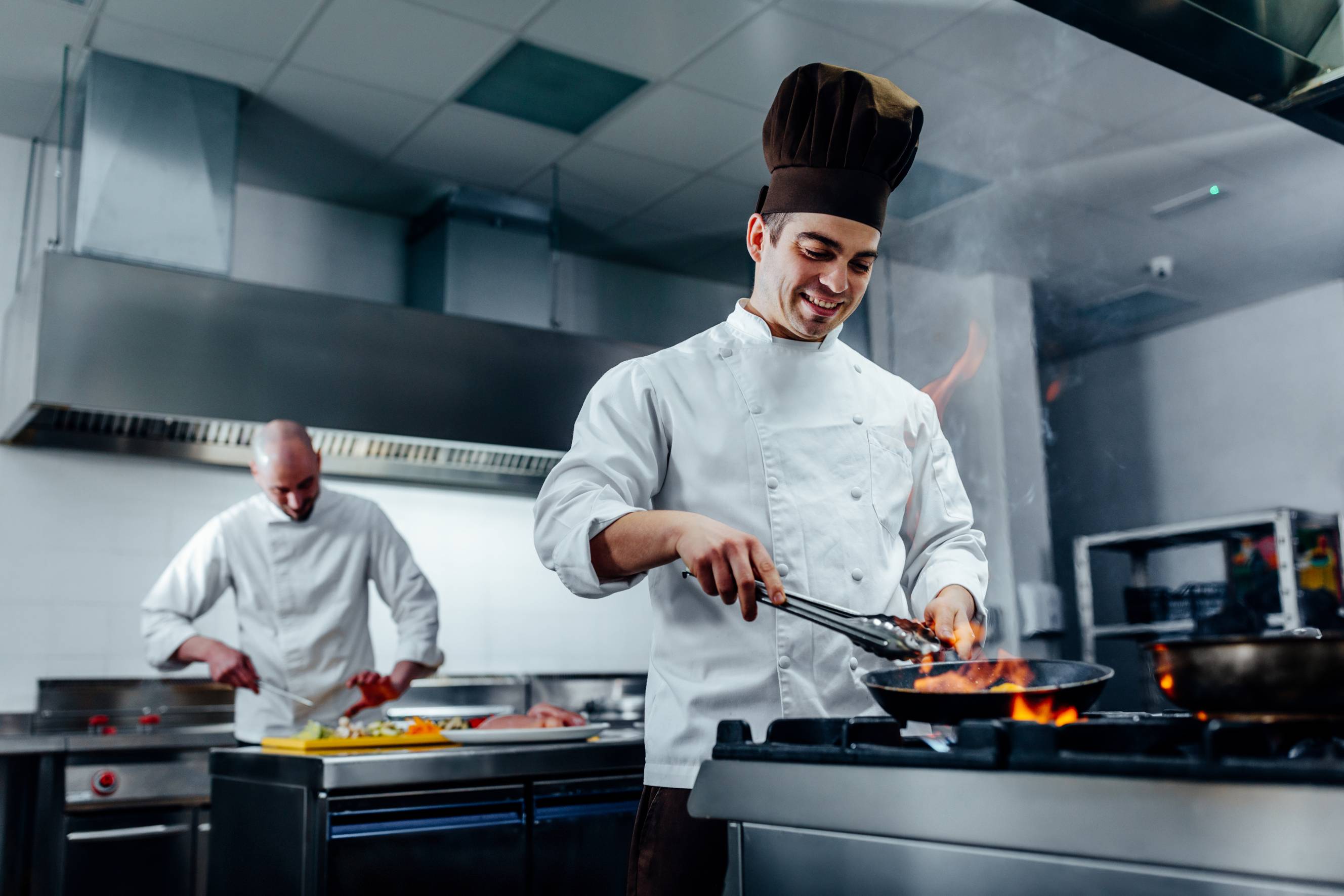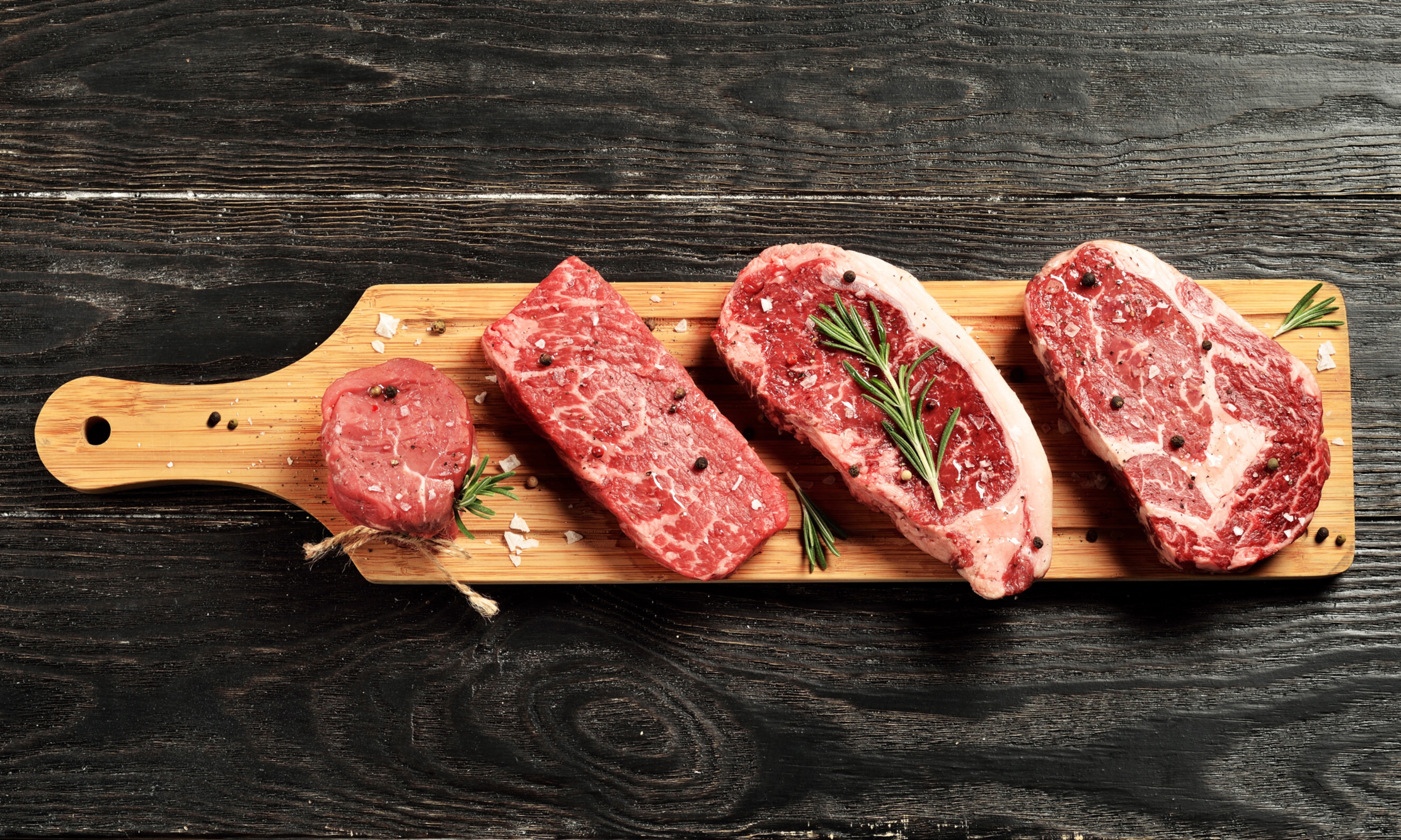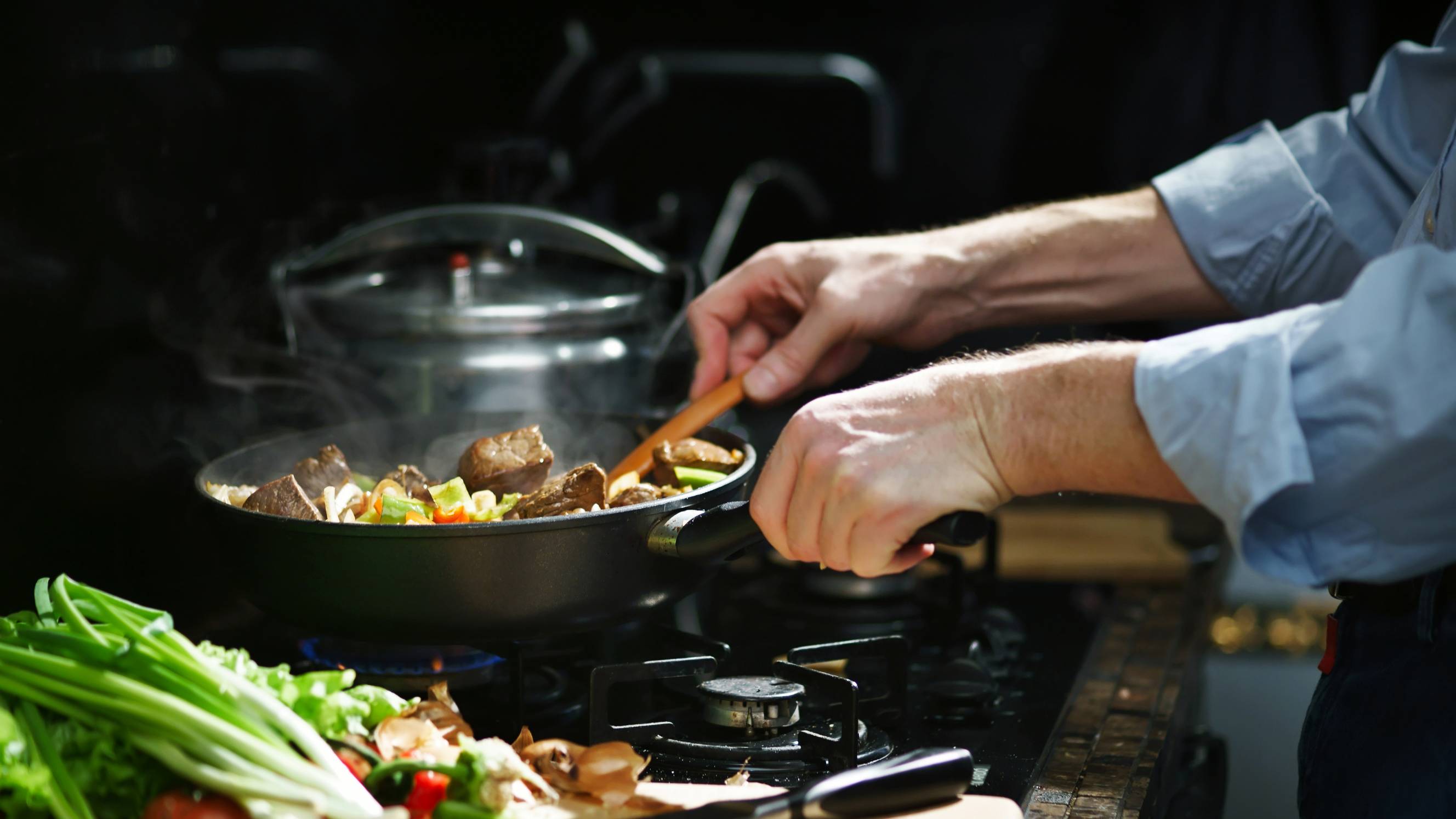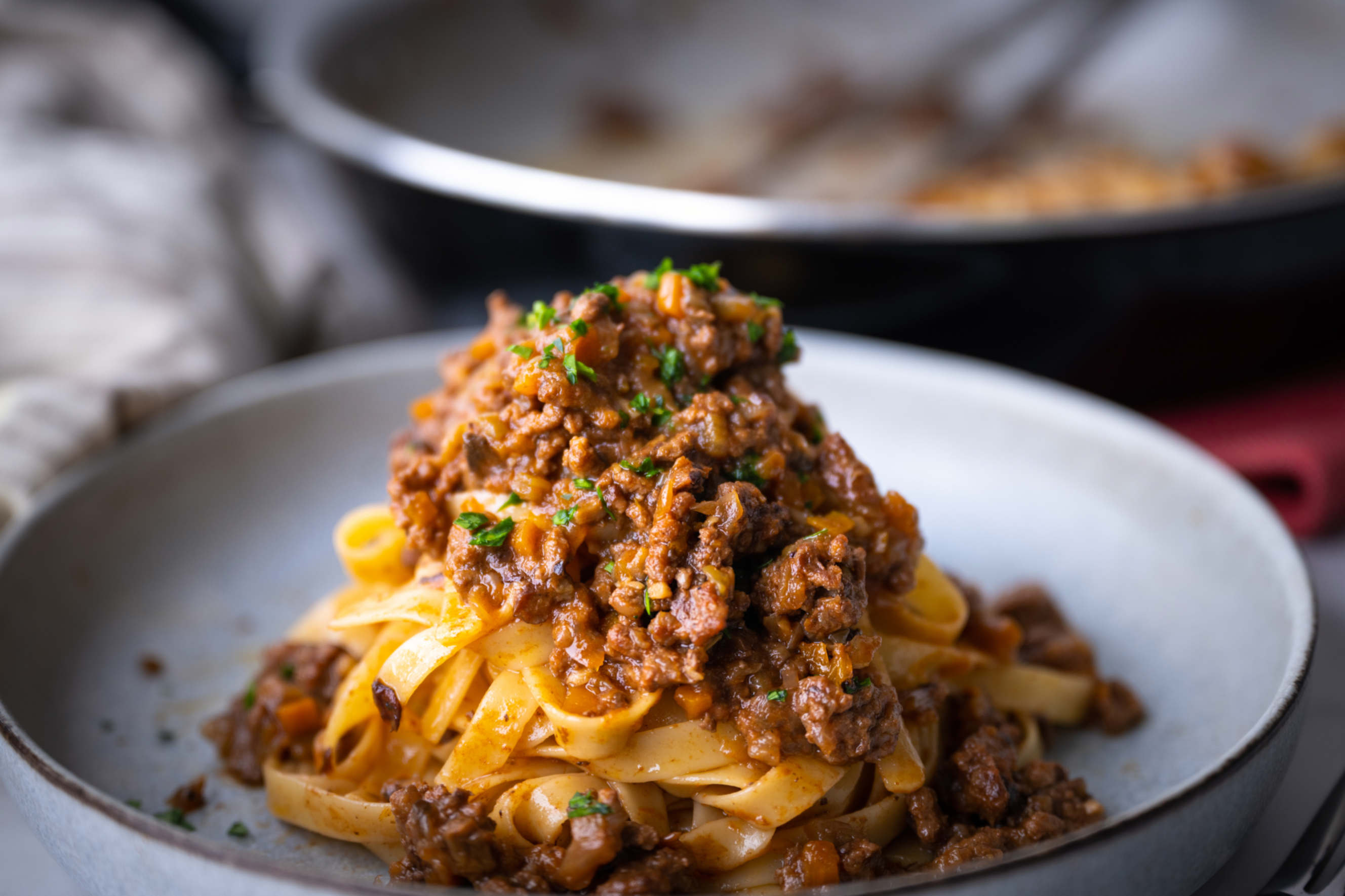
- Home/
- Comparisons/
- Chef/
- Ragù vs Bolognese
Ragù vs bolognese: What sets these pasta sauces apart?
Comparing ragù and bolognese in terms of ingredients, flavour profile, and more
Published on
Key Facts
Ragù is an Italian sauce made by slow-cooking meat and tomatoes and used for pasta.
Bolognese is a type of ragù from Bologna, Italy, made with white wine and, sometimes, with milk or cream.
According to experts, tomato-based pasta sauces are a great source of Lycopene, which has hearty and healthy effects on the body. Aside from being nutritious, they’re also incredibly delicious and versatile. That brings up a common question: which pasta sauce should you pick: ragù or bolognese?
In this ragù vs bolognese guide, we’ll discuss the differences between these two Italian sauces, which is better than the other, and what would be awesome for your next Sunday lunch. Read on and gain some gastronomic knowledge!
What is ragù?
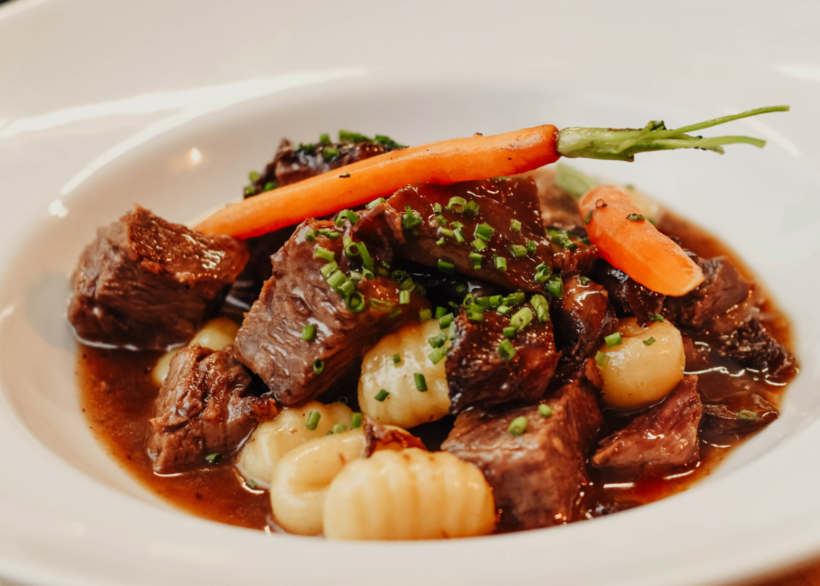 A warm hug in a bowl: tender ragu, fluffy gnocchi, and perfectly cooked veggies. (Source: iStock)
A warm hug in a bowl: tender ragu, fluffy gnocchi, and perfectly cooked veggies. (Source: iStock)
Ragù is an umbrella term for a type of tomato-based sauce from Italy used by professional chefs around the globe. These sauces are often made with chunks of beef or pork, onions, celery, carrots, and wine, then slow-cooked for a few hours until the meat is fork-tender. The result is a delicious and nutritious sauce perfect for different kinds of pasta or as a base for stews and soups.
What is bolognese?
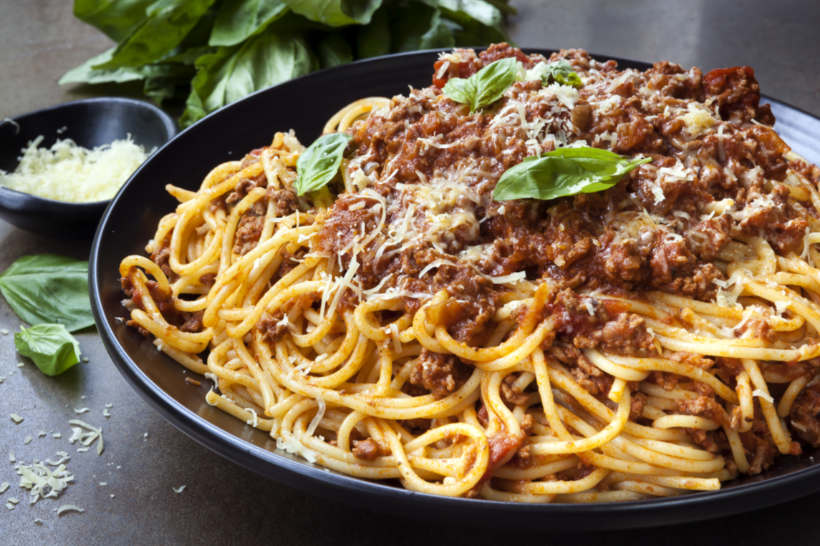 Delicious spaghetti bolognese served with a rich meat sauce, fresh basil, and a sprinkle of parmesan cheese. (Source: iStock)
Delicious spaghetti bolognese served with a rich meat sauce, fresh basil, and a sprinkle of parmesan cheese. (Source: iStock)
A bolognese sauce is a type of ragù from Bologna, Italy. It’s primarily made with ground meat and tomatoes, onions, celery, carrots, white wine, and, sometimes, cream or milk. The sauce is gently simmered for a long time until it thickens. It is often served over pasta as a sauce but versatile enough to be used for other dishes.
Ragù vs bolognese sauce: How do these pasta sauces differ?
Whether you’re factoring in costs for your personal chef or just want to learn more about the differences between bolognese and ragù, read on and discover more about the two Italian sauces you’ll typically find from the best Italian takeaways.
In terms of primary ingredients
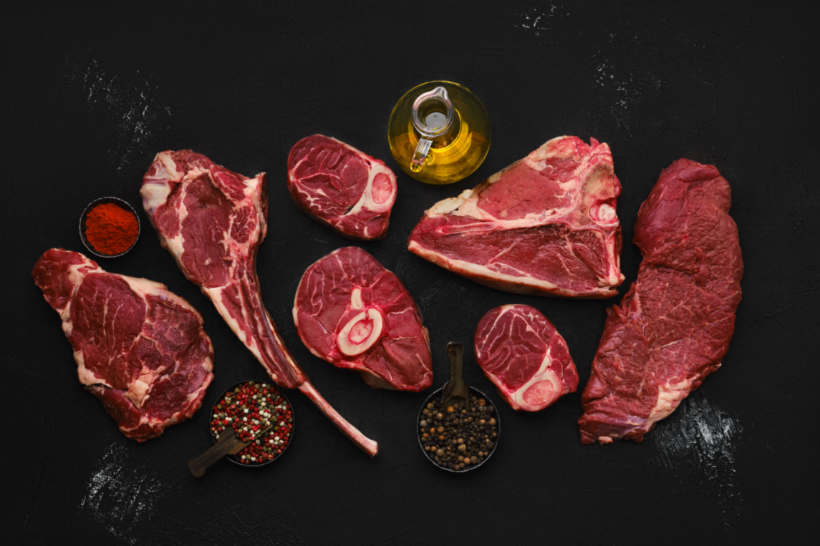 Raw beef cuts, spices, and oil – the start of a perfect ragu or bolognese. (Source: iStock)
Raw beef cuts, spices, and oil – the start of a perfect ragu or bolognese. (Source: iStock)
Both ragù and bolognese use carrots, celery, and onions as their base ingredients, which are common ingredients available from local groceries. However, most ragùs, such as Neapolitan ragùs, use red wine. Most ragùs also incorporate larger chunks of meat, such as pork shoulder, beef rump, or lamb necks.
Bolognese, on the other side, uses white wine instead of red wine as its base. In terms of meat, it uses minced pork or beef. As already mentioned, bolognese may also incorporate milk or cream when being made.
In terms of flavour profile
Ragùs have a deep and rich flavour profile thanks to the combination of red wine and large chunks of meat. The slow-cooking method allows the sauce to have a fuller and more developed flavour as the onions, carrots, and celery melt into it, complementing the texture of the meat.
Bolognese also incorporates a rich flavour profile but comes out relatively smoother and creamier versus ragùs. Compared to the chunky nature of ragùs due to its meat, bolognese comes out more consistently.
In terms of pasta pairings
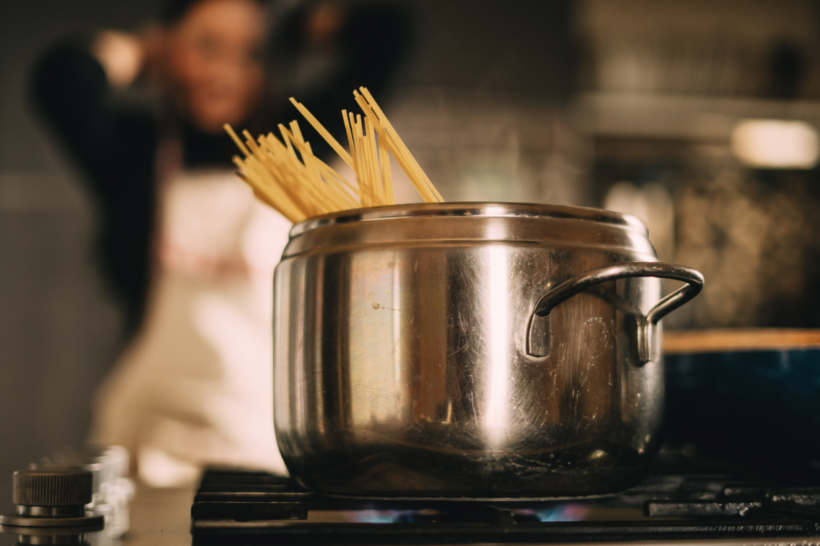 Spaghetti cooking to perfection – ready for ragu or bolognese magic. (Source: iStock)
Spaghetti cooking to perfection – ready for ragu or bolognese magic. (Source: iStock)
Ragù is often paired with tagliatelle or pappardelle, two types of wide and flat pasta that allow the sauce to cling to it. Bolognese can also be paired with the two mentioned kinds of pasta, but since it's incredibly versatile, it also works well with the likes of spaghetti or linguine. Others also use bolognese as the base for their lasagne or as an accompaniment to their ravioli and tortellini dishes.
In terms of the cooking method
Bolognese and ragù are prepared by slow cooking, but ultimately, bolognese sauces can cook faster.
Both sauces start by having their meat browned in the pot using oil, followed by sauteing the onions, carrots, and celery. Wine is then added to the pot and simmered to let the alcohol evaporate. Afterwards, broth is added and brought to a boil. Once boiling, the heat is lowered so the mixture can slowly simmer in the oven or on the hob for a few hours.
Bolognese uses minced meat instead of tougher or larger cuts, so its overall cooking time is faster. Bolognese can be a viable option for those who need a pasta sauce in a pinch. Ragù, with its larger and tougher meats, can take significantly longer to cook.
In terms of serving style
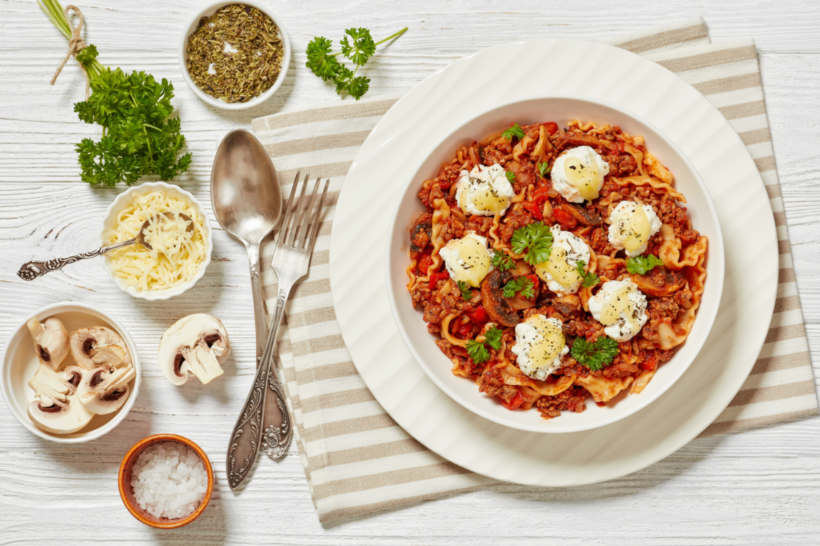 Beautifully plated ragu with ricotta and fresh parsley garnish. (Source: iStock)
Beautifully plated ragu with ricotta and fresh parsley garnish. (Source: iStock)
Ragù is often served as a hearty dish with one or two large chunks of meat ladled with sauce sitting atop a serving of pasta and then garnished with parsley or basil. It is the belle of the ball with the pasta serving as the accompaniment.
In comparison, bolognese walks hand in hand with the pasta it is served with. While a bolognese sauce is delicious by itself, the pasta it comes with will help determine the additional texture and nature of every bite.
Both dishes are delicious in their respective serving styles. However, it will depend on your preference which of the two will be perfect for your planned meal or event.
In terms of price
Out of the gate, bolognese will be cheaper between the two sauces. One kilogram of good-quality minced beef will average around 10 to 11 quid and would be enough for a family of six.
On the other hand, ragùs tend to vary in price more due to the preference of the meat used. Cheap cuts, such as lamb necks, can be used, which will even out the price with bolognese. However, any prime cut will exponentially increase the overall cost of a ragù.
A small disclaimer: prices mentioned are only brief estimates as food pricing fluctuates depending on the season, environmental factors, and overall market conditions set by your local groceries.
Craving homemade ragù or bolognese? Find a personal chef on Airtasker!
Making the perfect ragù for your family is time-consuming and labour-intensive—and that’s without factoring in the hassle of buying the ingredients!
Skip all the hair-pulling stress and just enjoy great food when you let the professional chefs from Airtasker handle it. Post a task today and let the pros give you the elevated gastronomic experience you deserve!
Ragù vs bolognese
|
Ragù |
Bolognese sauce |
|
|---|---|---|
| Primary Ingredients | Uses red wine and larger cuts of meat | Uses white wine and minced meat |
|
Flavour Profile |
Deep and rich | Rich and creamy |
| Pasta Pairings | Tagliatelle or pappardelle | Spaghetti or Linguine |
|
Cooking Method |
Slow cooking, the slower of the two | Slow cooking, faster of the two |
| Traditional Serving Style | Preferential, but usually served as a hearty dish | Preferential, but usually served with pasta |
| Price | Can range from cheap to expensive |
Cheaper |
FAQs on ragù and bolognese sauce
Ragù is an Italian method of creating a sauce primarily using a protein, such as pork or beef, and tomatoes. On the other hand, ragout is the French method of making a stew with the same concept as a Ragù.
Simmering down the details, a ragù is aimed more towards a pasta sauce, while a ragout is a dish itself.
Sunday sauce, or Sunday gravy, is a thick, tomato-based sauce. Its name derives from its slow-cooking method, which made it appealing for preparation over the weekend and serving on Sunday as part of a family meal.
Bolognese, or ragù alla bolognese, is also a thick, tomato-based sauce that emphasises the meat component, often minced beef. Bolognese is also primarily used as a meaty pasta sauce.
The best meat for bolognese will depend on preference. Traditionally, it’s made with minced beef, but different people have different tastes (and sometimes medical limitations), affecting what meat is perfect for them.
Find chefs, fast
Post a task
Related articles
Related price guides
